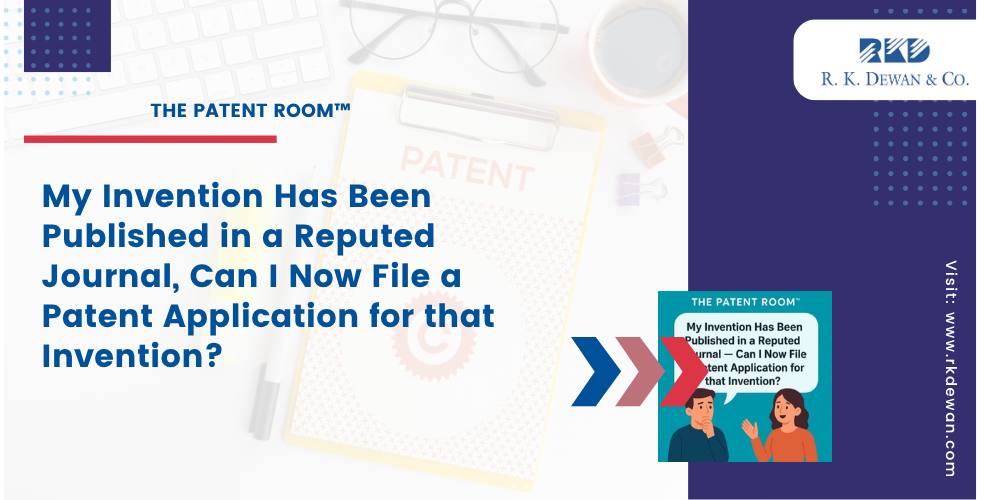Ideas are everywhere. But protecting them? That’s where the real story begins.
Let’s talk about a problem many researchers and inventors face — you’ve spent months refining your idea, your results are finally solid, and your work gets published in a reputed journal. Then, it hits you: can I still file a patent for this invention?
It sounds like a simple question, but the answer can decide whether your innovation stays yours or becomes public property. Once your invention is out in the world through a journal publication, even one written by you, it may lose its “novelty” — the very quality needed to qualify for a patent. But there are exceptions, nuances, and smart ways to protect your work without sacrificing academic recognition.
Understanding IP is not just for lawyers and corporates; it is for anyone who dares to create.
Here’s what you need to know before you publish that next breakthrough.
The Publication Predicament
Imagine you have poured months maybe years into developing a ground-breaking invention. Your research is solid, your results are exciting, and naturally, you want the world to know. You publish your findings in a journal. The paper gets cited, shared, and applauded.
But then comes the realization “Can I now acquire a patent grant for it?”
Unfortunately, in most cases, no. Once your invention is published, it becomes public knowledge. The Patent law in India operates on a simple principle i.e., an invention must be novel, meaning it should not have been publicly disclosed before the date of filing your patent application. If your idea has already appeared in a publication, even one authored by you, it no longer meets the requirement of novelty. There are some exceptions to this rule as I have described below.
In a few jurisdictions such as the United States of America and Japan publications in journals are exempt provided the patent applications are filed within one yar of the date of publication.
Why “Public Disclosure” Matters
Your invention must be non-existent to the public before your patent application date. A journal publication no matter how academic or niche counts as a public disclosure. This is because once your invention is disclosed, anyone can reproduce or build upon your idea, and you cannot claim exclusive rights over it anymore.
Section 31(d) of the Indian Patent Law: The Narrow Exception
However, Section 31 of the Patents Act, 1970 provides a few limited exceptions. Under these, certain disclosures made under specific conditions are not considered detrimental to novelty.
One such provision is Section 31(d). Which states that an invention’s patentability will not be affected if it was, with the inventor’s permission, published by the learned society as a part of its transactions.
This means, if the learned society published your paper, with your permission, as a part of its transactions then such a publication will not invalidate your patent rights.
However, if your publication does not fall within this category, the invention will be deemed publicly disclosed, thereby losing its novelty. In such a scenario, any subsequent patent application made in India would be rendered invalid for grant, as the invention would fail to satisfy the requirement of novelty. Although a patent application cannot be filed in India after publication, such a patent application can be filed validly in jurisdictions such as the United States of America and Japan within one year of the date of publication.
The Smart Sequence
To avoid falling into this trap, the golden rule remains simple: File First, Publish Later.
File a provisional patent application before submitting your paper. This secures your “priority date” and gives you 12 months to file a complete specification.
Once your provisional application is filed, you are free to publish your research while keeping your invention protected.
Use that provisional year to strengthen your data, refine your claims, and prepare a solid complete specification.
This way, you can enjoy both: academic recognition as well as patent protection.
The Takeaway
Patents and publications do not have to be enemies; they just need to be timed right. Publishing before filing may earn you citations, but filing before publishing earns you ownership.
So, instead of “PUBLISH AND PERISH,” “PATENT, PUBLISH AND PROSPER.”
This content is origiunally posted on : https://www.rkdewan.com/
URL: https://www.rkdewan.com/blogs/can-i-file-a-patent-after-publication-in-a-journal/



